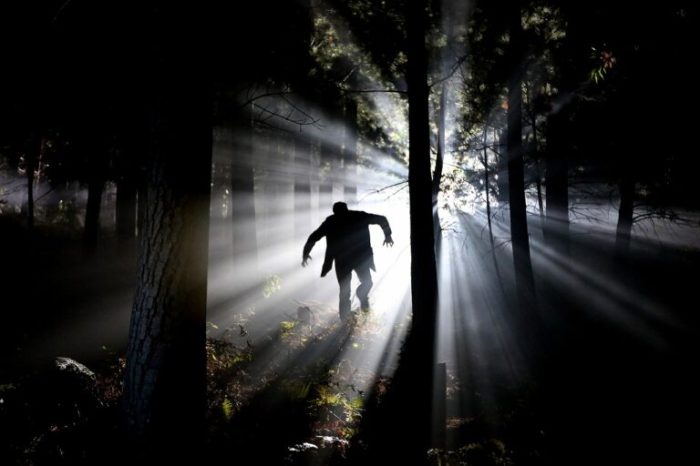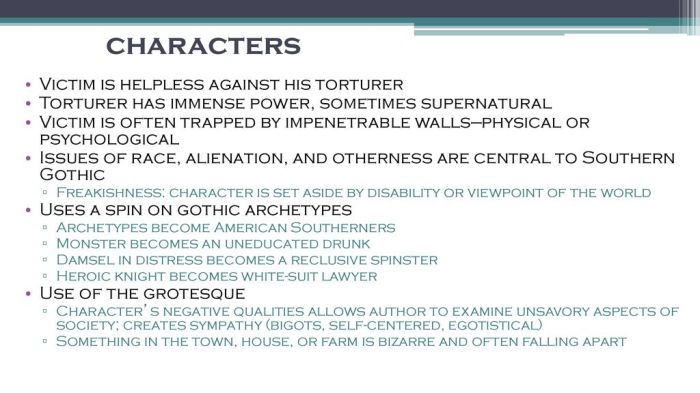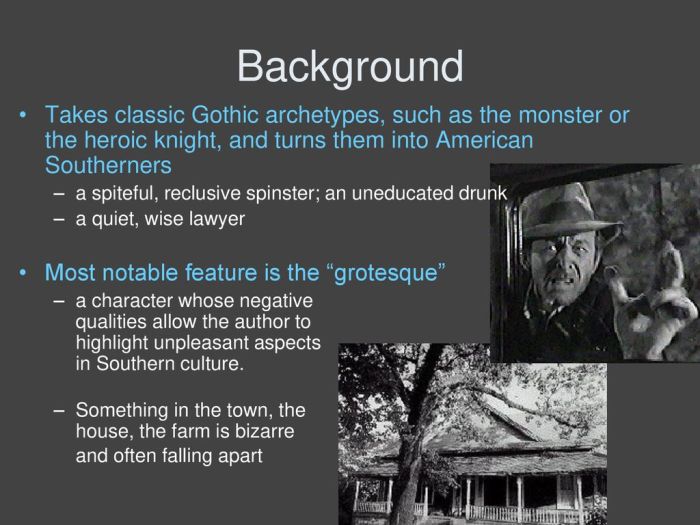In some aspects of the grotesque in southern fiction, this opening paragraph is designed to captivate and engage the readers, setting the tone that unfolds with each word. The grotesque, a literary device employed to evoke feelings of horror, disgust, and unease, has found a fertile ground in the rich tapestry of Southern literature.
Originating from the Gothic and Romantic traditions, the grotesque in Southern fiction has evolved into a distinct and powerful force, shaping the works of some of the region’s most renowned writers. From Flannery O’Connor’s grotesque characters to William Faulkner’s grotesque settings, this literary device has served as a means to explore the complexities of identity, community, and the human condition in the American South.
Historical Context of the Grotesque in Southern Fiction: Some Aspects Of The Grotesque In Southern Fiction

The grotesque has deep roots in Southern literature, emerging in the 19th century as a distinct literary tradition. Influenced by Gothic and Romantic movements, Southern writers employed the grotesque to explore the complexities of the Southern experience. Early practitioners included William Faulkner, Flannery O’Connor, and Eudora Welty.
Forms and Functions of the Grotesque in Southern Fiction
The grotesque in Southern fiction manifests in various forms, such as grotesque characters, settings, and events. It serves as a literary device that disrupts traditional notions of beauty and order. The grotesque challenges conventional societal norms and reveals the hidden truths and contradictions of the human condition.
Major Southern Writers and Their Use of the Grotesque
William Faulkner’s grotesque characters, such as the Compson family in “The Sound and the Fury,” embody the decay and dysfunction of Southern society. Flannery O’Connor’s grotesque settings, such as the plantation in “Wise Blood,” reflect the tension between faith and violence in the South.
Eudora Welty’s grotesque events, such as the funeral in “A Worn Path,” explore the resilience and strength of marginalized individuals.
Contemporary Expressions of the Grotesque in Southern Fiction
The grotesque continues to evolve in contemporary Southern literature. Writers like Cormac McCarthy and Toni Morrison have adapted the grotesque tradition to address contemporary issues such as violence, racism, and environmental degradation. They use the grotesque to confront the dark undercurrents of Southern society and provoke readers to reflect on its complexities.
The Grotesque in Southern Film and Television, Some aspects of the grotesque in southern fiction
The grotesque has found expression in Southern film and television, most notably in the works of directors such as John Waters and Quentin Tarantino. These filmmakers employ grotesque imagery, characters, and situations to critique societal norms, explore taboo subjects, and challenge traditional cinematic aesthetics.
User Queries
What are the origins of the grotesque in Southern literature?
The grotesque in Southern literature can be traced back to the Gothic and Romantic traditions, which emphasized the exploration of darkness, horror, and the supernatural.
How does the grotesque function in Southern fiction?
The grotesque in Southern fiction serves as a literary device to evoke feelings of horror, disgust, and unease, often to explore themes of identity, community, and the human condition.
Who are some major Southern writers who have employed the grotesque?
Major Southern writers who have employed the grotesque include Flannery O’Connor, William Faulkner, and Carson McCullers, among others.
How does the grotesque manifest in contemporary Southern literature?
In contemporary Southern literature, the grotesque continues to manifest in diverse and innovative ways, reflecting the ever-evolving nature of Southern fiction and its ability to grapple with the complexities of modern life.

